How to make homemade ginger beer, including photos and a video! This simply recipe is lower in sugar than store-bought ginger beer, contains vitamins and probiotics, and is a healthier alternative to most carbonated drinks because it contains less sugar and no carbonated water.
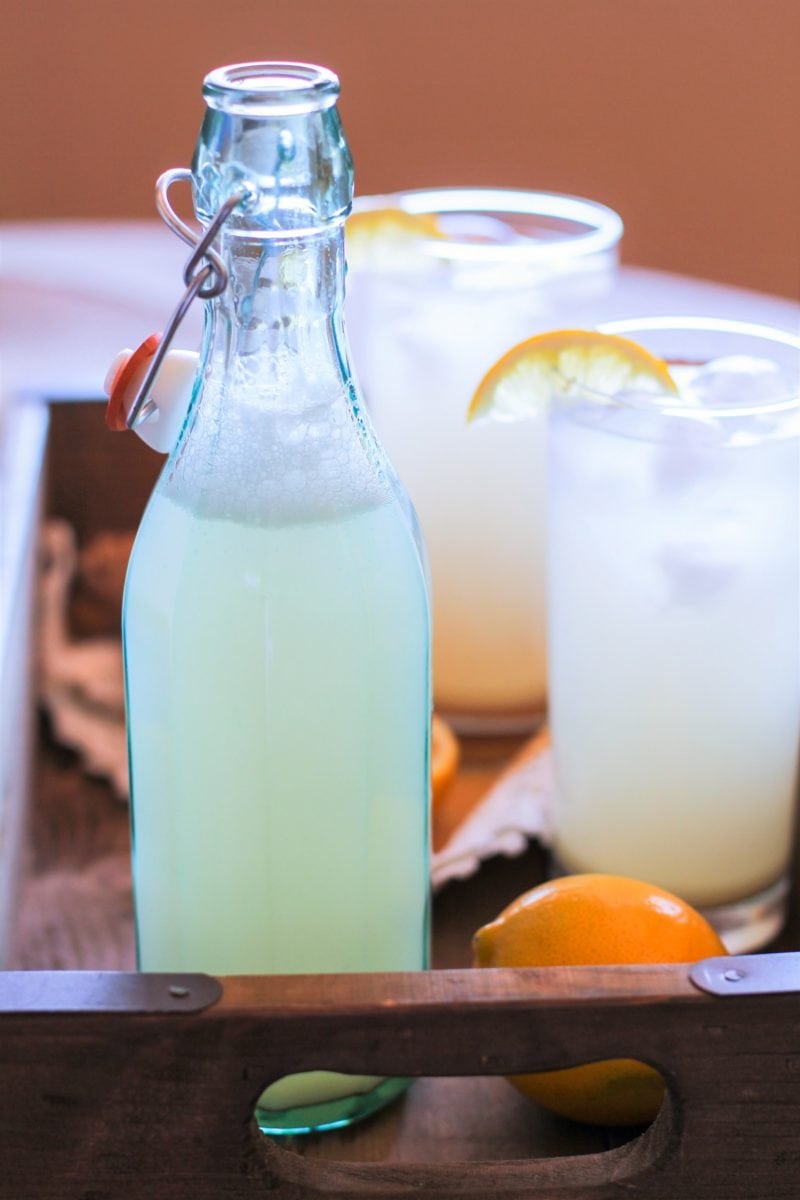
Ginger beer has been all the rage for years, and for a very good reason.
The sweet and spicy beverage is tasty by itself and adds pep to all sorts of cocktails and mocktails. If you’re anything like me, you could add ginger beer to all of your cocktails from now until doomsday.
Most of us think of ginger beer in the context of the Dark n’ Stormy or Moscow Mule and other cocktails that involve the brew. But did you know you can make a stellar homemade ginger ale at home, and not only is it easy, but it’s also great for you?
Because we like to do things in the legit-est of ways, we’re going to put on our DIY cap and learn how to make fermented ginger beer at home.
And it’s going to be healthier than the store-bought version, because that’s the way we roll.
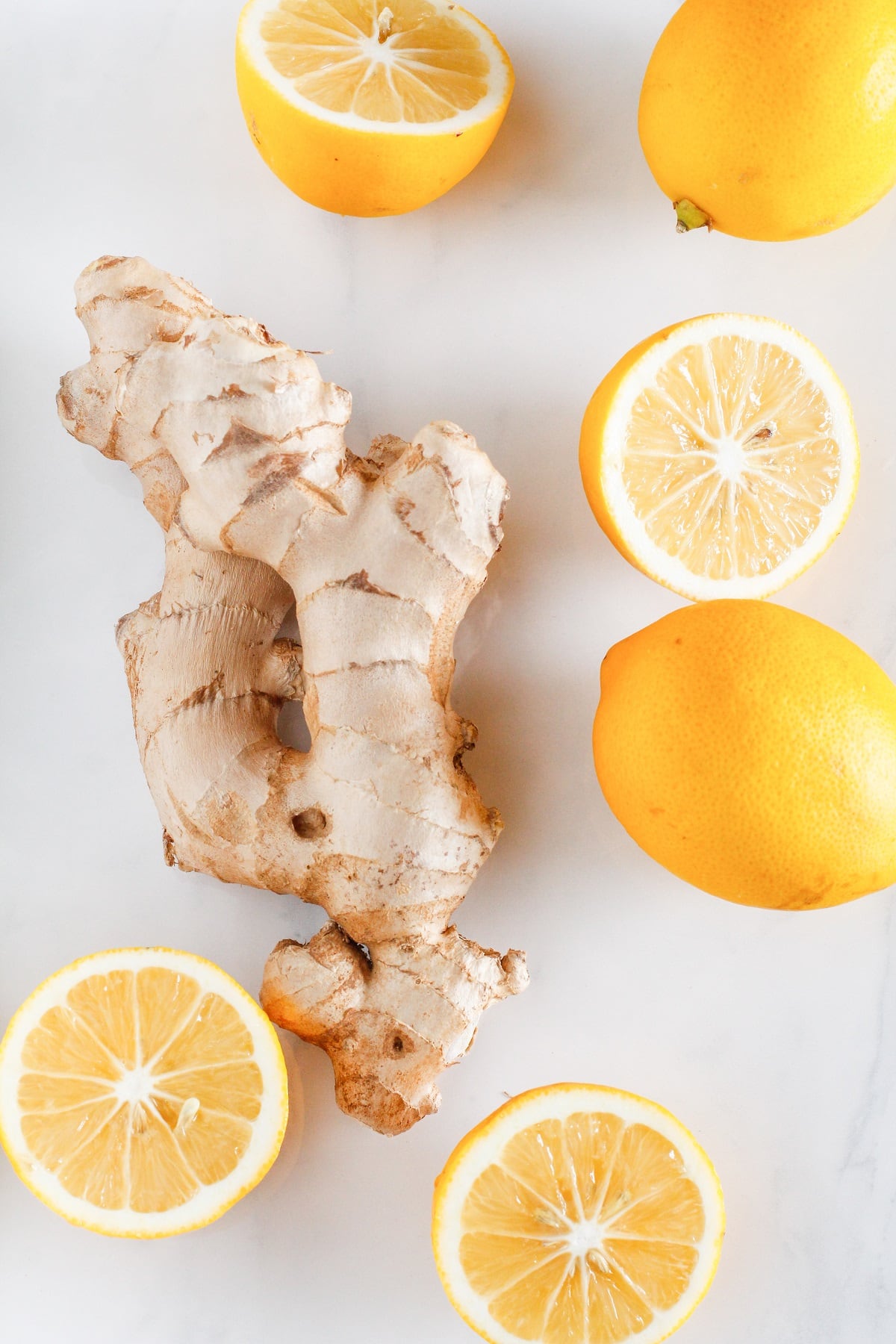
Types of Homemade Ginger Beer Recipes:
There are several ways to make ginger beer.
Method #1: Most people make a simple syrup using ginger, sugar, and water, and then combine the simple syrup with soda water or seltzer water.
While this is the least time consuming way of making ginger beer, and definitely comes out tasting great, we can take it a step farther by fermenting ginger beer into a healthful drink so that it contains less sugar but still tastes sweet.
Method #2: The old fashioned way uses a “ginger bug” or “ginger starter,” which is ginger that has fermented in sugar and water to the point that its natural enzymes and probiotics are released.
Once a ginger bug is formed, it is then brewed into a batch of ginger brew, which results in a probiotic-rich effervescent drink.
This method of making ginger beer takes between 4 and 6 weeks, and is the method I describe in my cookbook, Delicious Probiotic Drinks.
I have also posted a tutorial on How to Make Probiotic Ginger Beer on this site for real ginger beer. Check it out if you’re looking for a beverage with a higher concentration of probiotics.
It is also an alcoholic ginger beer that has a tiny amount of alcohol but can be fermented in such a way that increases the alcohol content.
Method #3 (this recipe): The method I’m sharing in this post uses regular baker’s yeast.
The yeast consumes the sugar as it reproduces, which means that while the finished product tastes sweet, it is actually very low in sugar. Plus, it contains so much delicious ginger flavor!
Which Type of Ginger Beer To Make:
The quickest way is Method #1 listed above, which will require a recipe outside of this blog post.
Whether you choose to make this easy ginger beer recipe laid out in this post or my probiotic ginger beer is a matter of personal preference (and time).
For those of us who want ginger beer quickly, this easy version only takes 3 days from start to finish.
It still has health benefits from the yeast, but because it is not fermented for as long as the authentic version, it isn’t as probiotic-rich.
Is There Any Alcohol in Ginger Beer?
As with any fermentation process, a small amount of alcohol results.
The alcohol content in this ginger beer recipe is very low, almost non-existent.
Still, if you need to avoid alcohol, it is best to be safe and stick with a non-alcoholic ginger beer.
Ingredients Needed for Ginger Beer:
All it takes is fresh grated organic ginger, cream of tartar, lemon juice, active dry yeast, and cold water.
You can replace the lemon juice with lime juice if you’d like. I always go with organic fresh ginger root because it contains plenty of natural bacteria and natural yeasts for the best ginger beer.
Some people add brewer’s yeast (beer yeast) or champagne yeast to this recipe to boost the activity and alcohol content.
I don’t personally have experience with either one so can’t offer advice on how much to use or how to employ it, but if you’re interested in stepping up your brew, they are worth looking into!
I have also heard some people use sourdough starter to make ginger beer, but I have no experience with this either.
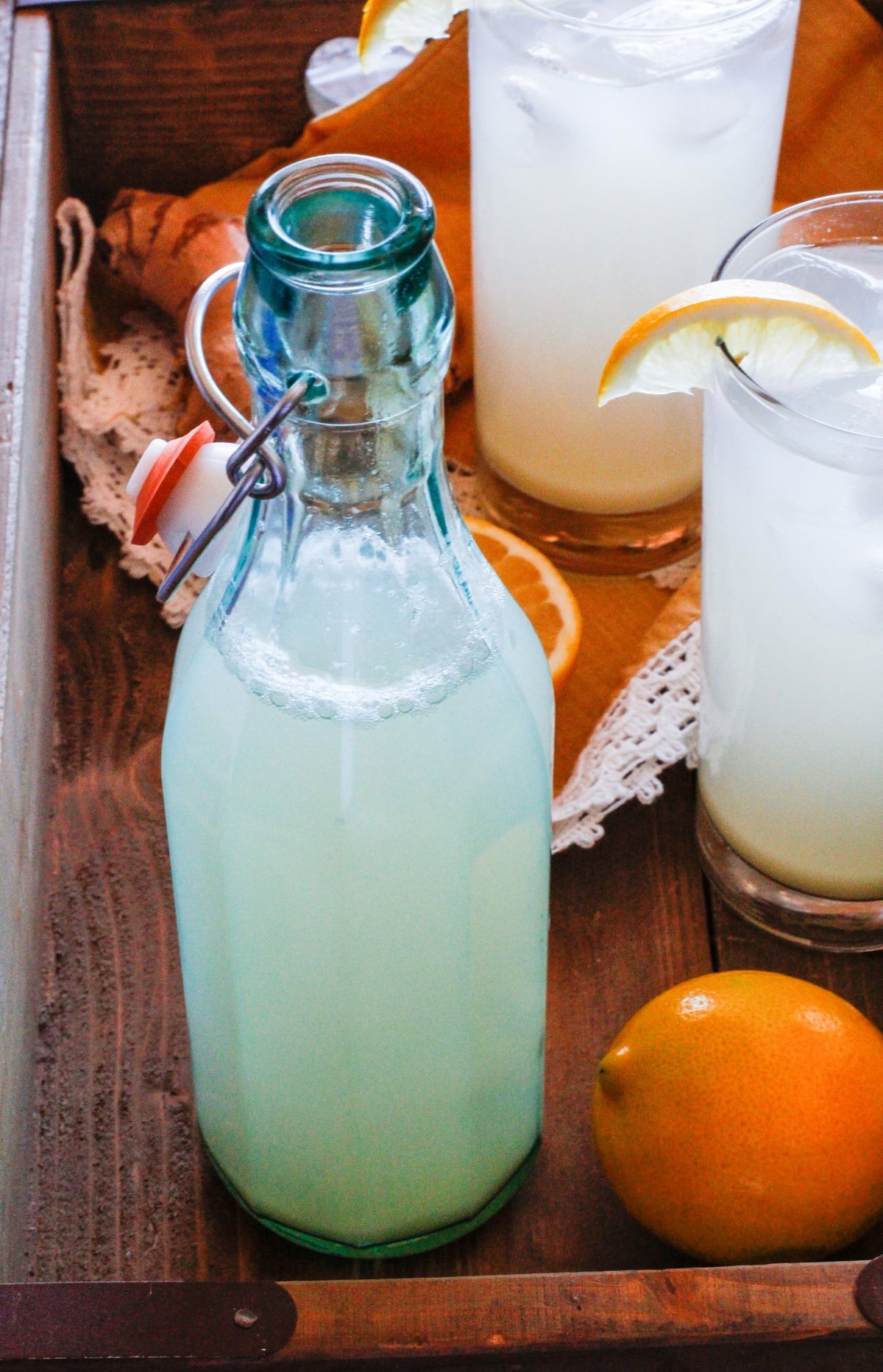
Health Benefits of Ginger Beer:
Ginger is a root and has been used as a natural remedy for upset stomach and nausea across many civilizations for hundreds of years.
It is a natural anti-inflammatory and digestive aid.
Studies show fresh ginger prevents and fights several types of cancer cells including breast, colon, ovarian, prostate, and lung cancer.
Ginger is also known for cleansing the body of toxic chemicals, as it is full of antioxidants.
When fermented, ginger releases enzymes and probiotics, which help maintain healthy gut microflora.
So is ginger beer really good for you?
Based on its ability to lower inflammation, aid with digestion, and boost your body’s immune system, yes, ginger beer is good for you.
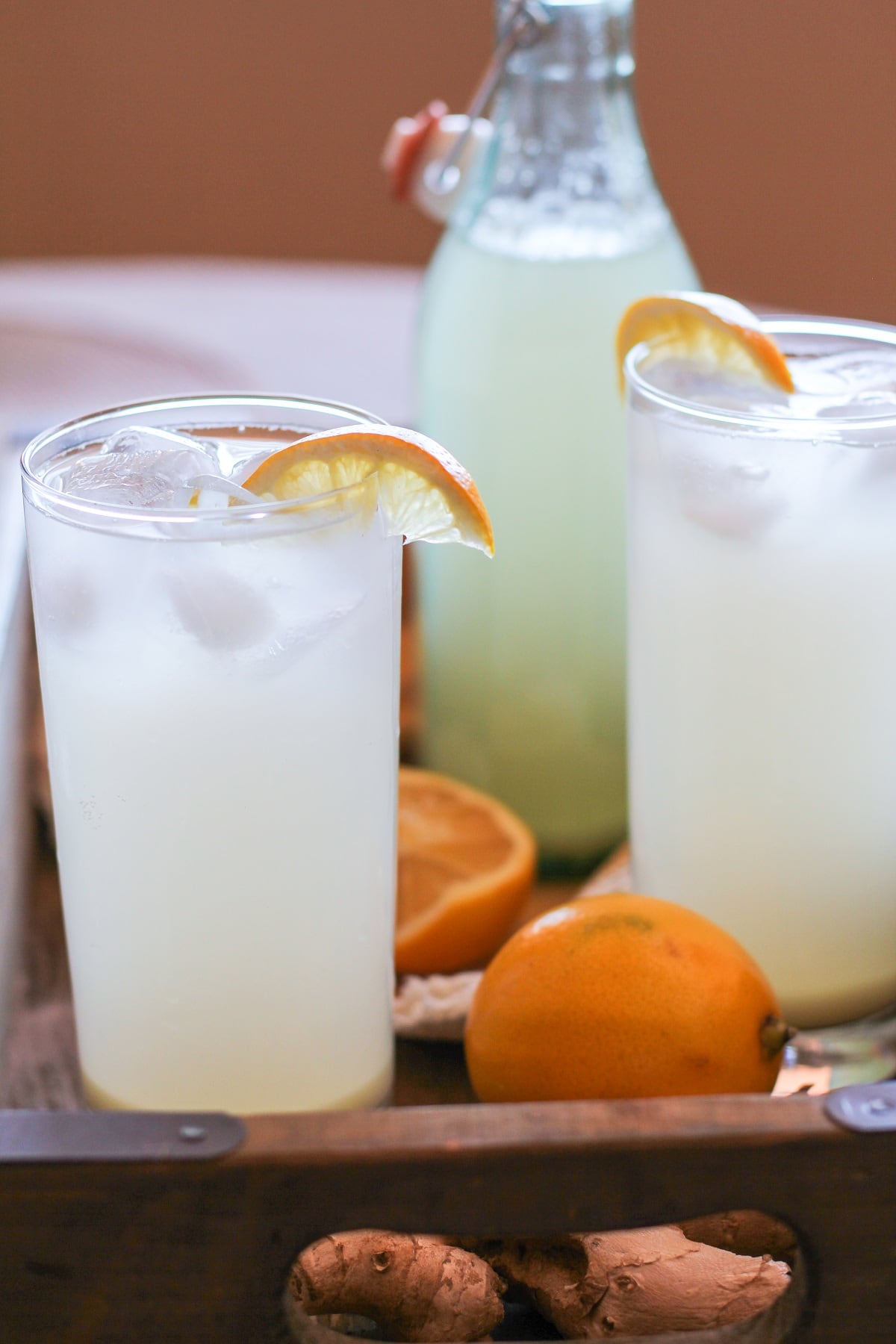
Now that we have all of the details laid out, let’s learn how to make ginger beer!
How to Make Ginger Beer:
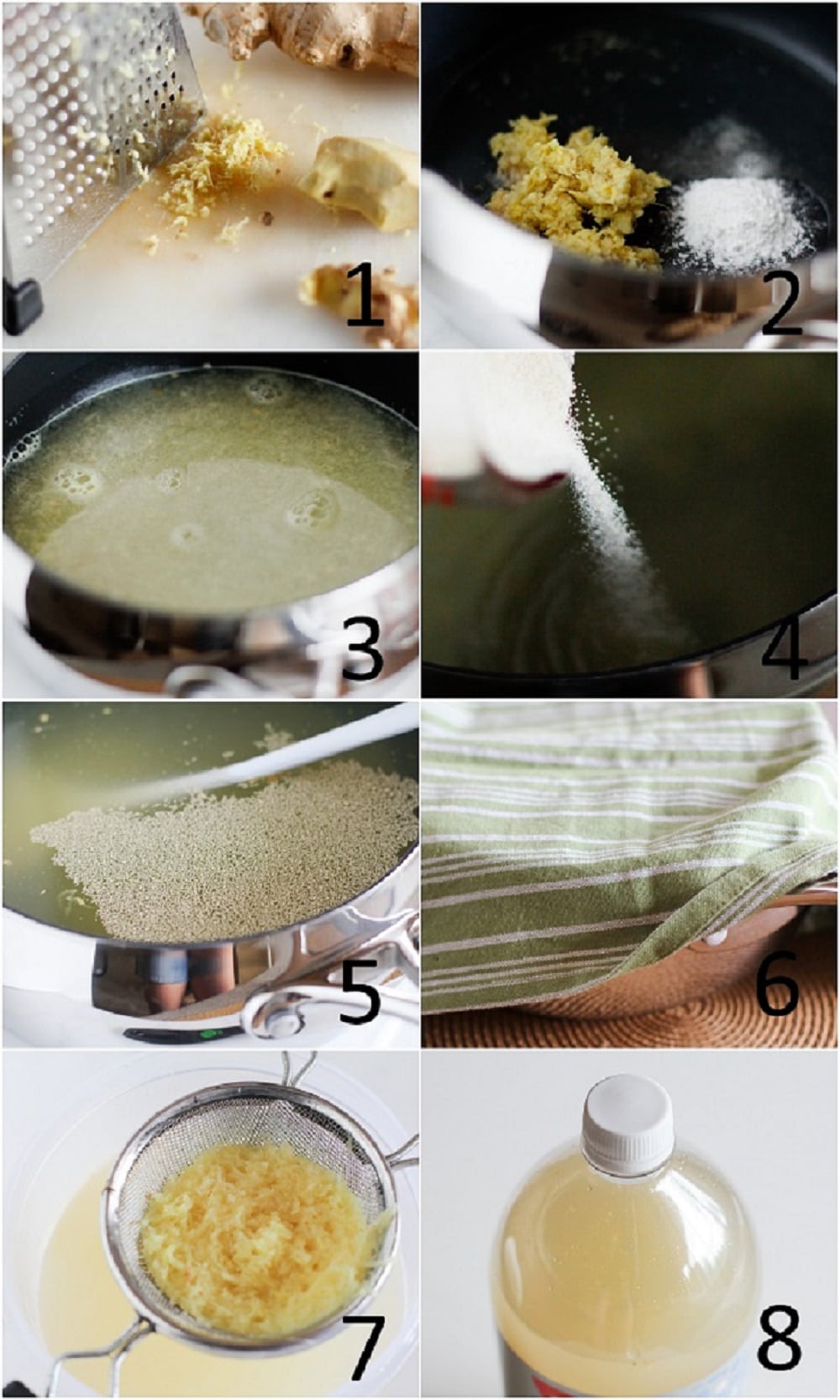
- Peel and grate the fresh ginger using a box grater. You want about 1/4 cup of grated ginger.
- Add the cream of tartar (1/2 teaspoon), lemon juice (1/4 cup), and ginger to a large pot.
- Add 4 cups of water, and bring the mixture to a full boil.
- Turn the heat down to medium, add the sugar and stir until all of the sugar is dissolved.
- Add the rest of the cold water to the pot (5 cups) and allow it to cool to around 75 degrees Fahrenheit (23 degrees Celsius). Add the yeast (1 teaspoon), stir well.
- Cover the pot with a kitchen towel and place in a warm, dark part of your house for 3 hours. The mixture should smell gingery and yeasty!
- Using a fine strainer, coffee filter, or a fine-mesh sieve, strain the liquid into a large pitcher to remove all the bits of ginger.
- Pour this strain mixture into a clean 2-liter plastic bottle. Empty soda water bottles work perfectly, and you can also use 2 one-liter bottles. Do not fill up the bottles all the way because the fermentation will yield carbon dioxide.
Place the plastic soda bottles in a dark place (ideally a warm room or warm place) for a couple of days.
One to three times a day, carefully loosen the caps to relieve some of the pressure without opening the bottles all the way.
The drink becomes very pressurized and fizzy, so skipping this step could result in a ginger beer bottle explosion. True story.
Be very careful in this process and do not point the bottles at anyone’s (or your own) face.
After your brew has finished fermenting, you can either add fruit, simple syrup, juice, or liquor to it to create a customized treat, or drink it as is.
If you choose to bottle the ginger beer in glass bottles, allow the ginger beer to lose much of its fizz prior to bottling, as it will continue to carbonate in the bottles.
This could result in them exploding if there is too much pressure.
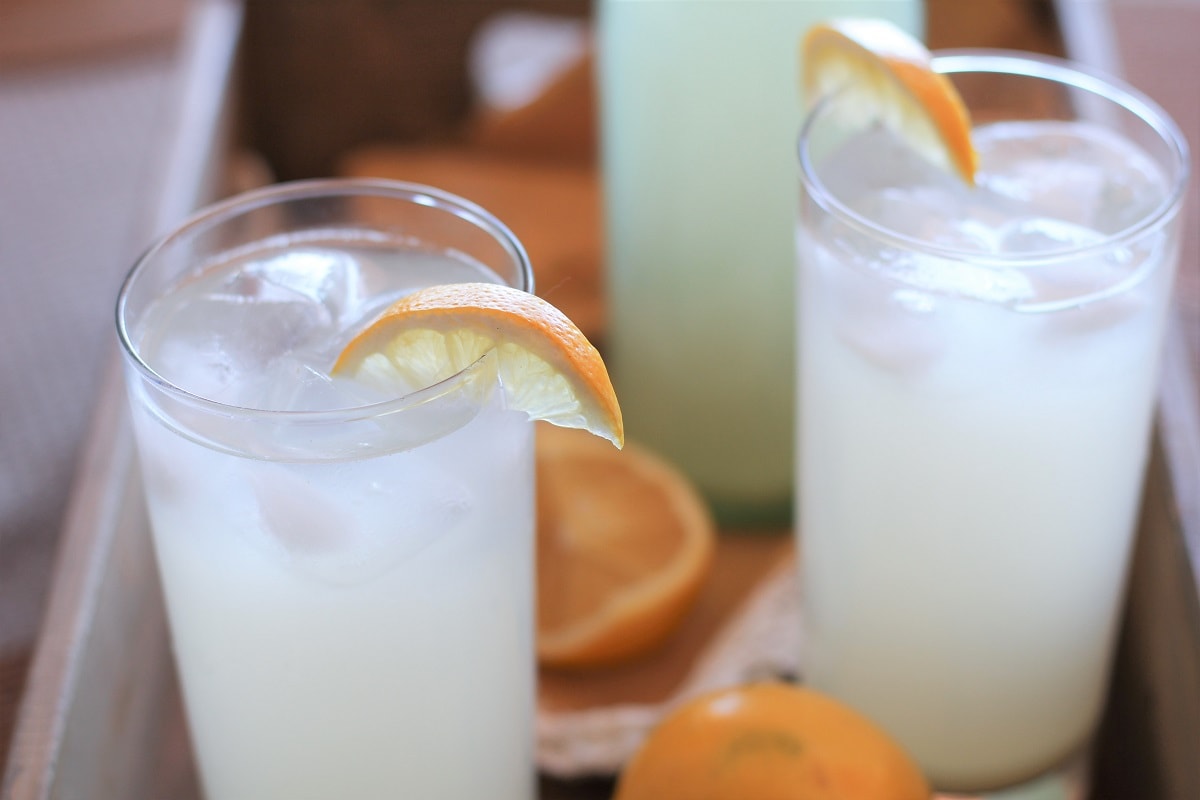
Important Notes:
During fermentation, DO NOT use glass bottles, because the glass can explode under pressure (yes, it builds up that much pressure!), be sure to use plastic bottles with screw tops, as noted in the recipe, so that you can relieve pressure during fermentation.
After 24 hours, you will notice yeast colonies on top of the liquid and settled at the bottom. This is normal!
Once the ginger beer has finished fermenting, glass bottles may be used for bottling and storing.
You must be very careful when opening the bottles because the beverage will still be very carbonated. Always point glass bottles away from your face or anyone else’s face while opening.
The longer you allow the brew to ferment, the more sugar will be metabolized by the yeast, resulting in a less sweet, drier beverage.
I recommend storing finished ginger beer in the refrigerator and always away from direct sunlight.
Depending on the time of year and the room temperature, the brew may take more or less time to ferment. If the room is particularly cool, it could take an extra day or two to finish fermenting, whereas if it very warm, it could take less than 48 hours.
How to Make Sweeter, Spicier Ginger Beer:
If you prefer a sweeter beverage, consider fermenting the ginger beer for one to two days only or simply start with more sugar (about 1 1/4 to 1 1/2 cups instead of 1 cup) than you need.
For spicy ginger beer, start out with double the amount of ginger for a kick. Make your own ginger beer based on your personal taste!
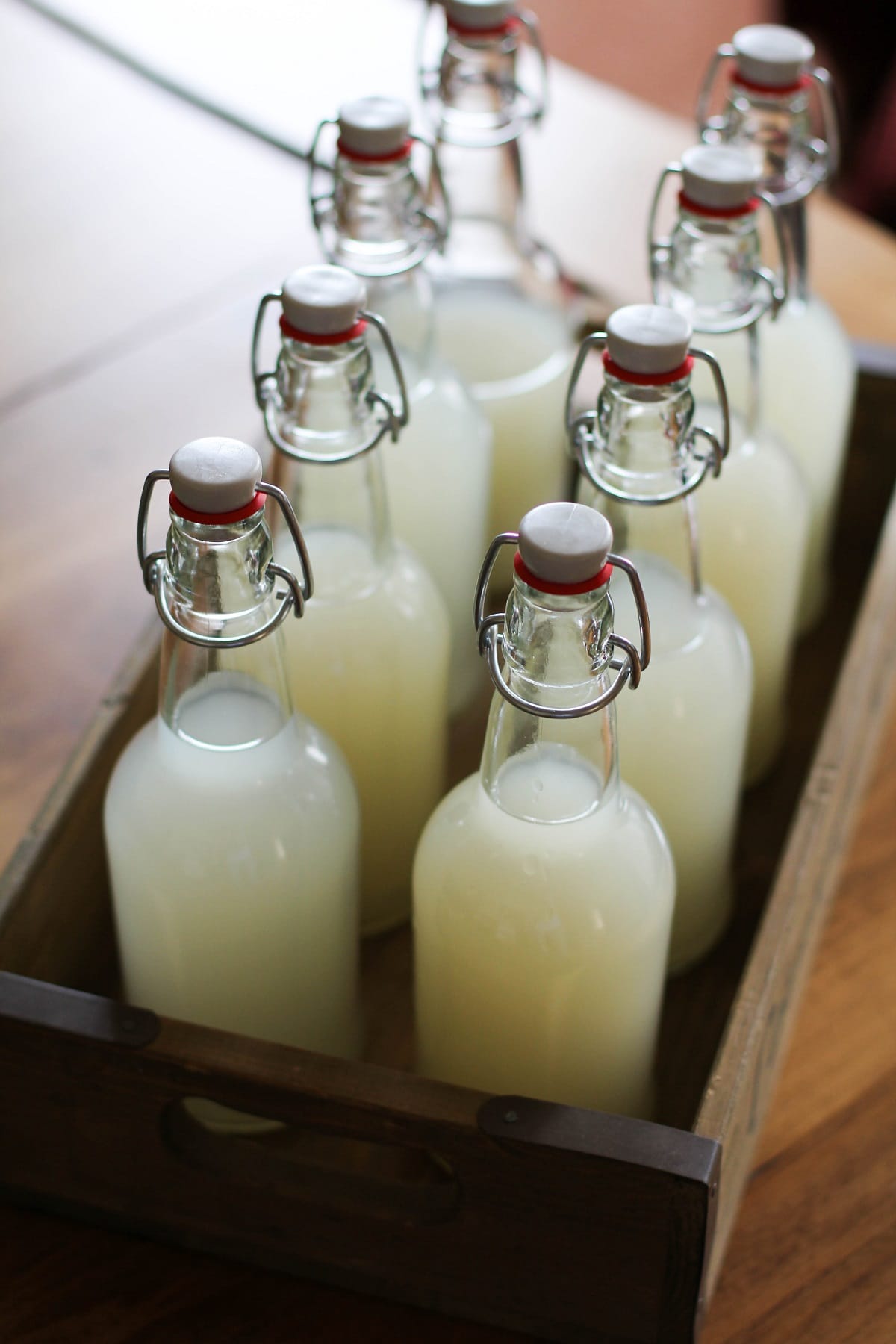
How to Store Ginger Beer:
Once the ginger beer has finished its few-day brewing process, store it in the refrigerator for 10 days, or up to 1 month when left untouched.
You can either store it in the same plastic bottle you used to brew it, or transfer it into glass flip cap bottles. I play it safe and store it in the same plastic bottle I use for fermentation.
Just note that the more you open the bottle, the more carbonation will be lost.
Enjoy the ginger beer as is or use it for cocktails or mocktails! I love it in my Strawberry Moscow Mules and my Cranberry Sauce Bourbon Cocktail!
While I was writing my cookbook, Delicious Probiotic Drinks, I had a great deal of fun with the ginger beer section – for me the challenge of making authentic ginger beer was even more interesting than brewing the perfect batch of kombucha.
Now go forth and ferment you some ginger juice.
My cookbook, Paleo Power Bowls, is now available! CLICK HERE to check it out, and thank you for your support!
If you make this ginger beer recipe, please feel free to share a photo and tag @The.Roasted.Root on Instagram!
Refreshing beverages for a warm day that takes little time, let’s go! Enjoy this homemade ginger ale!
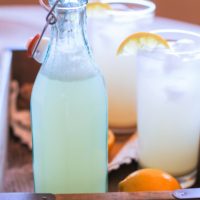
How to Make Ginger Beer
Ingredients
- 9 cups (48oz) spring or well water
- ½ tsp (1.3g) cream of tartar*
- 1/3 cup (35g) fresh ginger peeled and grated
- 1/3 cup (79ml) fresh lemon juice**
- 1 cup (150g) granulated cane sugar***
- 1 tsp (3g) active dry yeast****
You Also Need:
- 1 2-liter plastic bottle with screw top (a large soda water bottle that has been carefully cleaned works great)
- A medium to large sized pot for heating water
Instructions
- Add the cream of tartar, lemon juice and fresh grated ginger to a large pot along with 4 cups of the water. Bring to a full boil.
- Turn the heat down to medium, add the sugar and stir until all of the sugar is dissolved.
- Add the rest of the (cold) water to the pot and allow it to cool to around 75 degrees F (23 degrees C). Stir in the yeast, stir and cover the pot with a kitchen towel. Place pot in a dark place for 3 hours.
- Using a fine strainer, strain the liquid into a pitcher to remove all the bits of ginger.
- Pour the brew into one clean 2-liter plastic bottle (or two 1-liter bottles) but do not fill up the bottle all the way because the fermentation will yield carbon dioxide, causing gases to build in the bottle – you will need to give the liquid some room to build the gas. Place the bottles in a dark, warm room for 2 to 3 days (two days if you want a sweeter ginger beer, and 3 days if you prefer a drier ginger beer).
- Once to three times a day, carefully loosen the caps to relieve some of the pressure (without opening the bottles all the way). Be very careful in this process and do not point the bottles at anyone’s (or your own face). After the ginger beer has finished brewing, store it in the refrigerator to chill. This will also slow the fermentation process.
- Pour in a glass and enjoy as is, or add a splash of rum and lime juice for a Dark n' Stormy. Ginger beer keeps for 10 days – be sure to store in air-tight bottles in your refrigerator.
Video
Notes
Nutrition
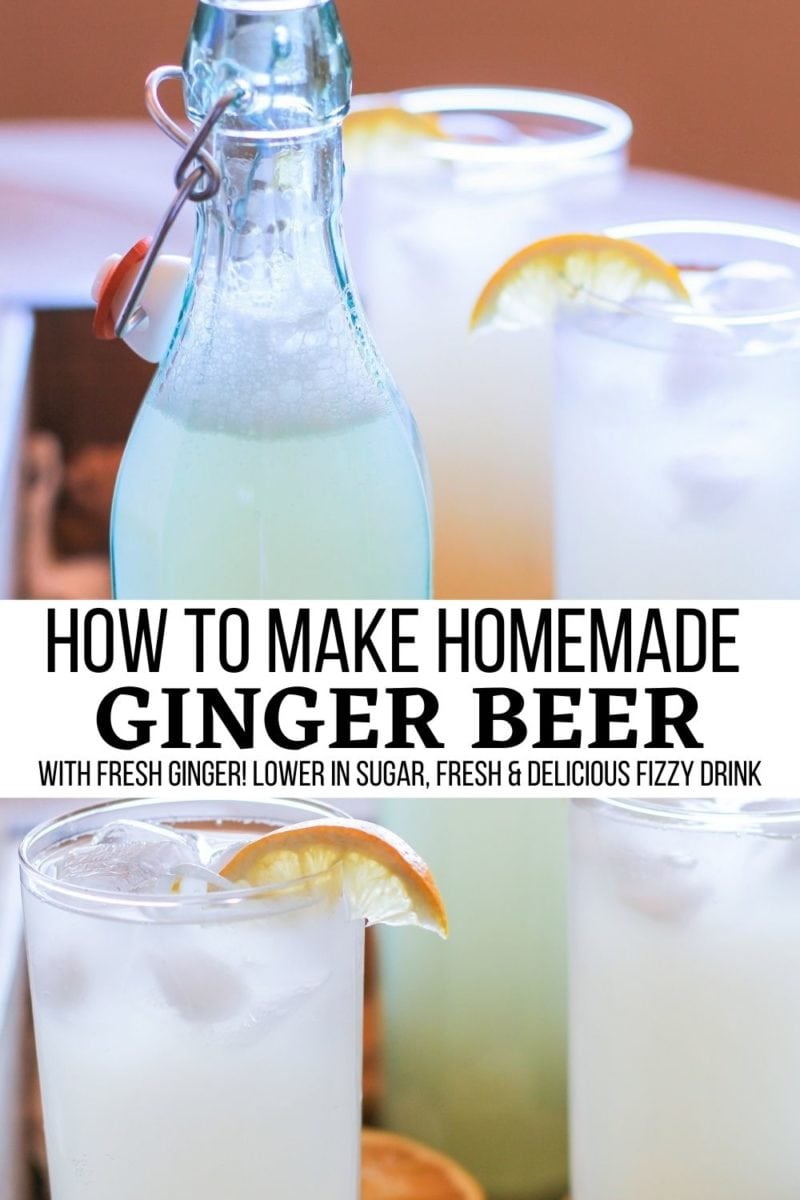
This post contains affiliate links, which means I make a small commission off items you purchase at no additional cost to you.
I originally shared this recipe on September 1, 2014. I updated the information and photos to make the tutorial even better.
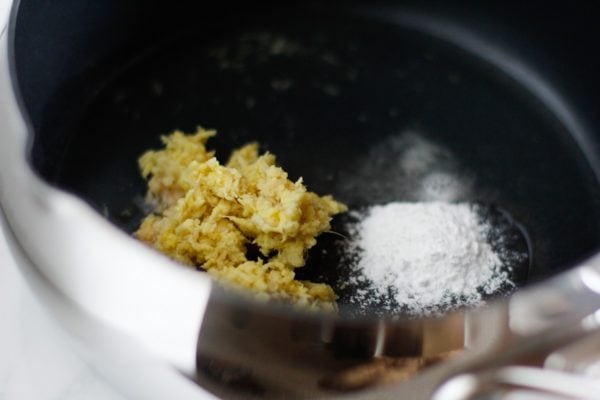
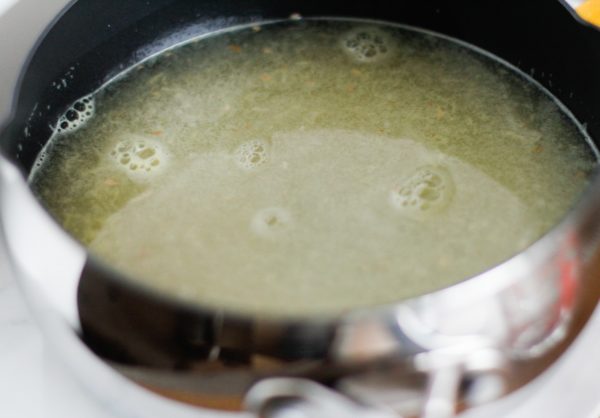
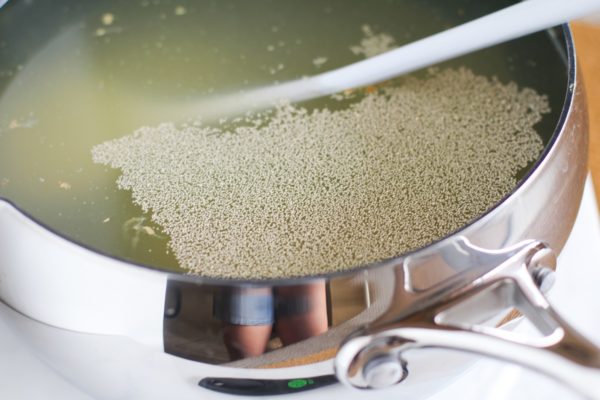
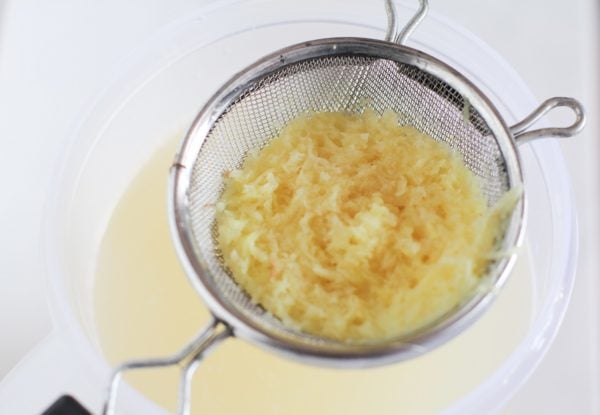
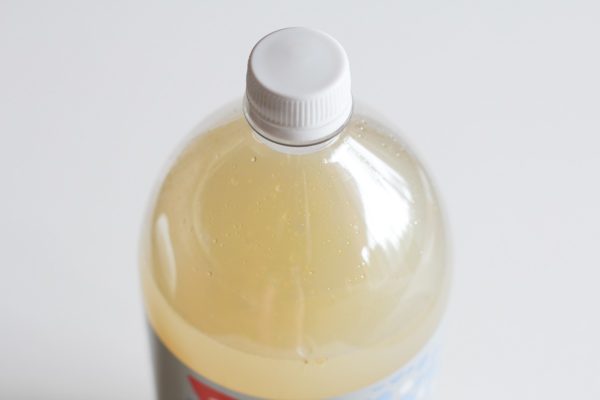

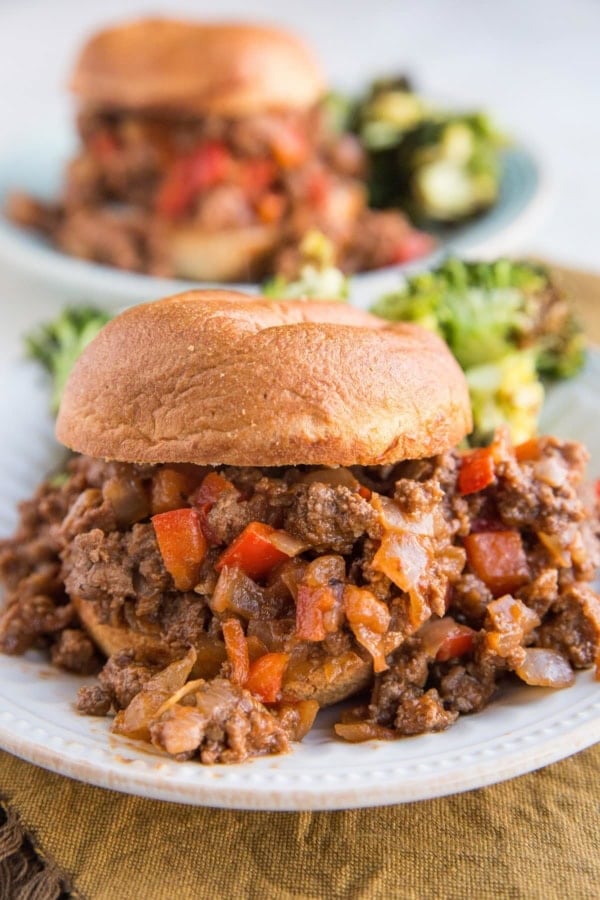
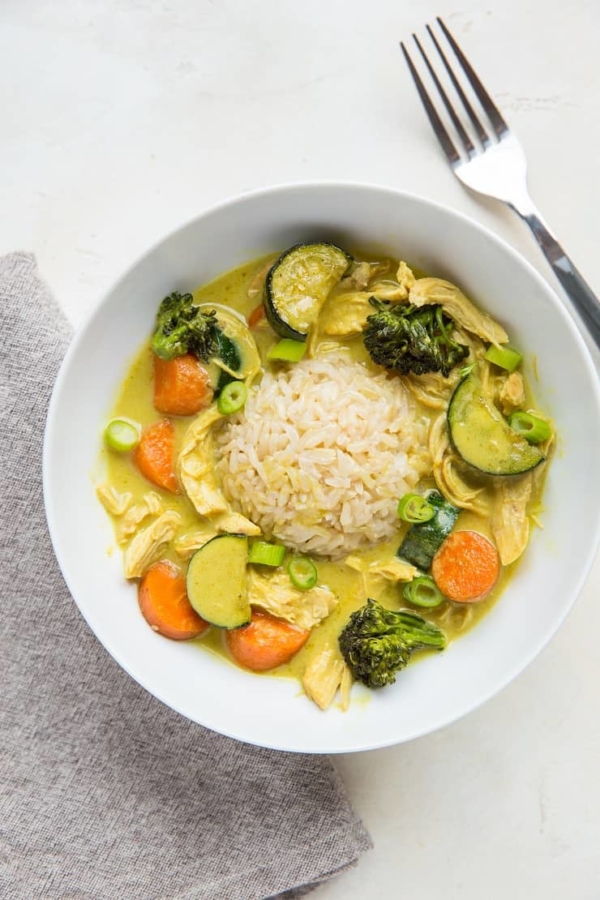
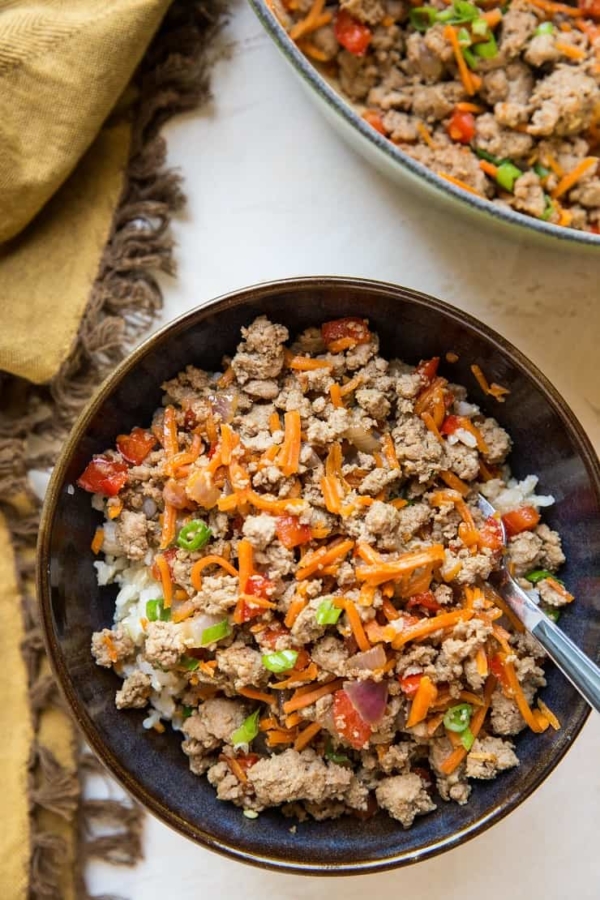
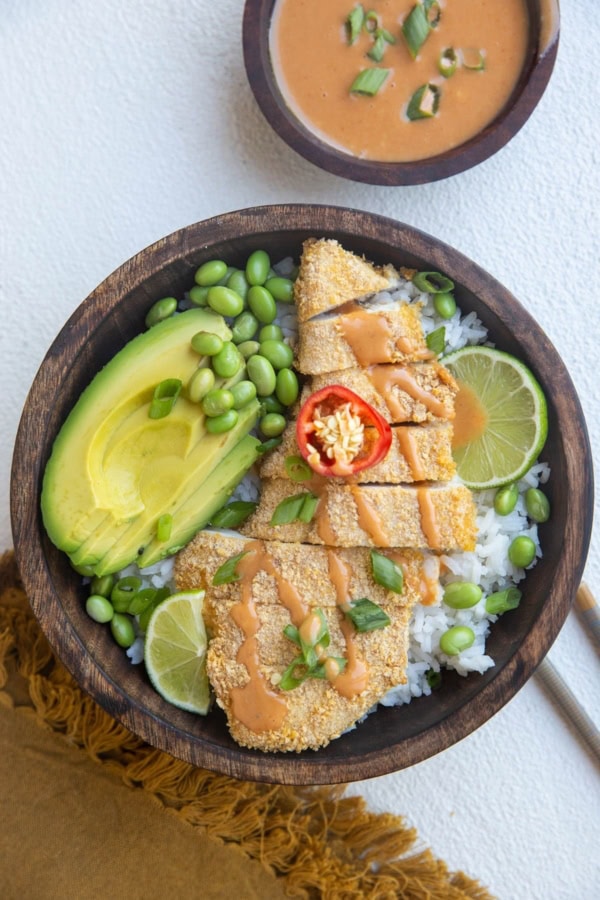









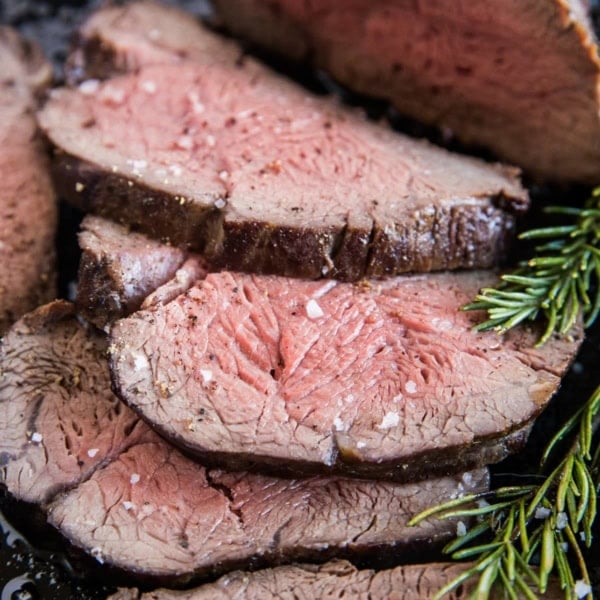
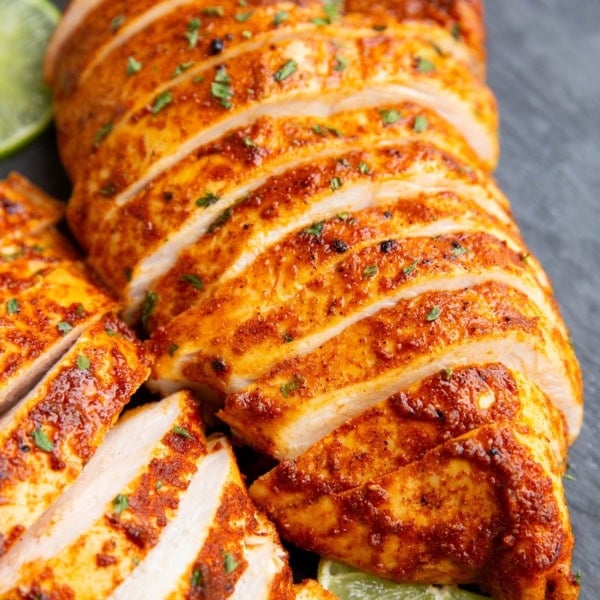
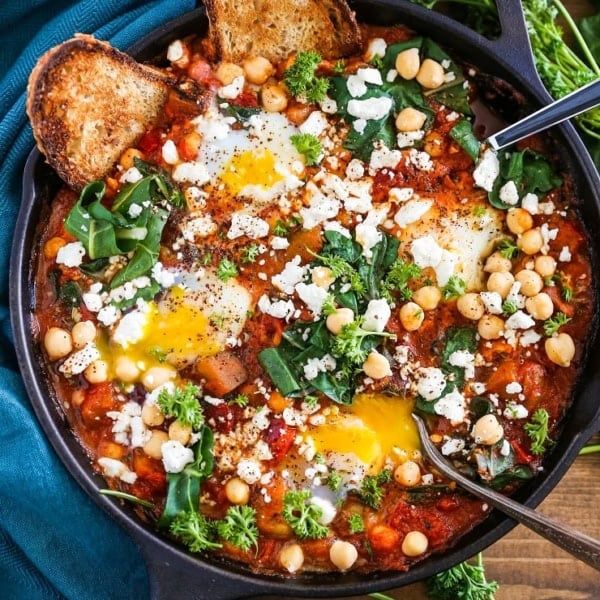
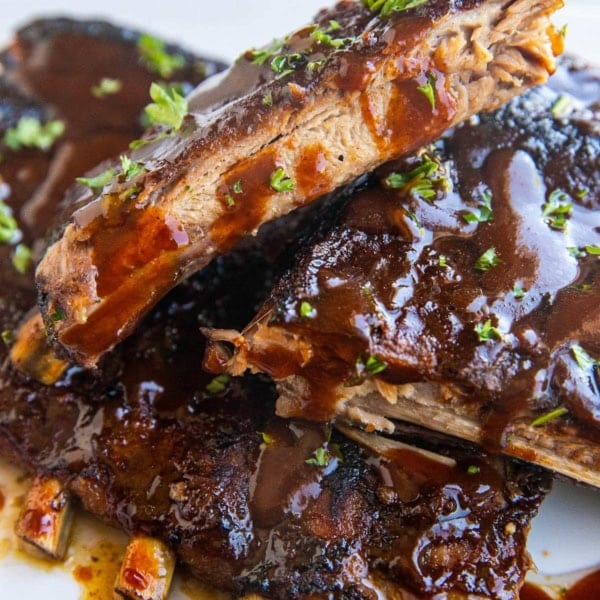
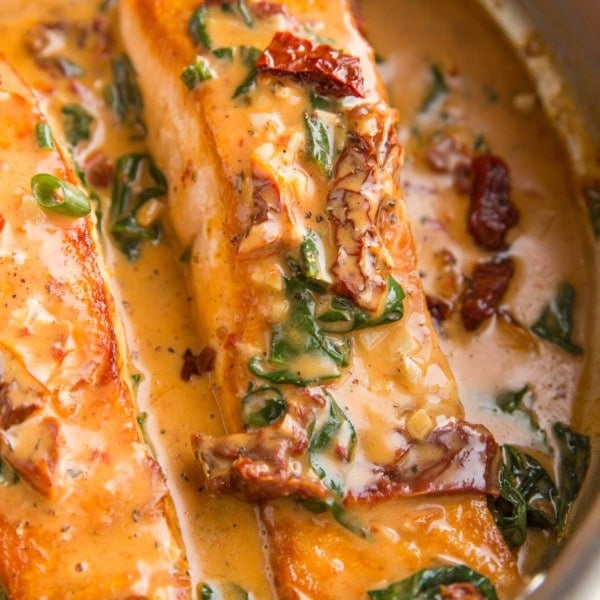
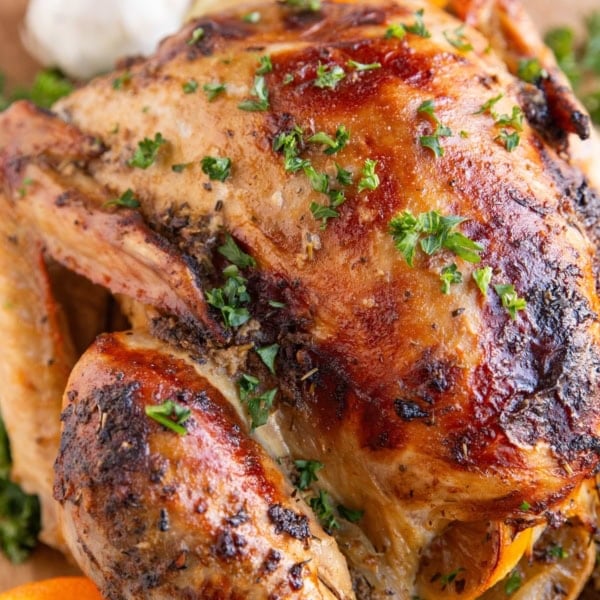
When you say “degas every few hours” you are inducating the problem. As with any fermentables , you must not seal the primary fermentation as it traps the carbon dioxide. There is no foam because there is no room to create foam. Loosely cover the fermentation vessel with plastic or a loose lid for the first 5 days then transfer it to a secondary fermentation vessel and a fix a fremlock. I doubt you have a bacteria problem but you may end up with a carbon dioxide burnt flavor in your finished product
Hi Julie! I have a troubleshooting question. One of my beers has a yellow paste (?) (not a foam) forming on the top and requires degassing every couple of hours. Has something gone awry; is the bacteria taking over in a bad way? Can ginger beer be brewed incorrectly and produce something that’s not good, or even toxic, to consume? Thanks!!
Hi Kristina,
It sounds to me like the yeast and possibly some ginger is congregating at the top of your ginger beer, which is no cause for concern. I would give it the smell test, and if it smells yeasty and gingery, you’re good to go. If it smells rank (like something you wouldn’t want to consume, or rotten), then toss it. It is definitely possible to end up with a bad batch of ginger beer, and you want to be careful with anything fermented, but my guess is your brew is just fine 😀 Let me know if you have any other questions, and happy brewing! xo
Do you know the calorie count of your ginger beer? We’ve been fermenting our own and love it, but I’m curious to know the calorie count.
Can I drink what’s at the bottom of the brewed ginger beer
Hi Duncan,
Absolutely! The sediment at the bottom is just yeast and probitoics, so if anything it would be good for you to drink it 😀
Does the three hour resting period need to happen and why does ginger beer need to be in the dark cheers
After 3 days the fizzy is there and taste not much carbonation bottle tightens should I not let presssure go cheer
Hi. I love ginger beer and just wondering what yeast you’d suggest for the most fizz. I’ve tried some homemade ginger beer and it’s never been fizzy enough for me. Any tips for some extra fizz?
Hi Matt,
This recipe will give you fizz galore, rest assured! I use regular active dry bread yeast (https://amzn.to/2J4nnUq) and it works great! Let me know if you have any other questions! xo
Hi Julia,
I wonder is it possible to ferment this mix in a pressure-cooker instead of a plastic bottle? I have glass bottles to transfer into once it’s ready but I really don’t want to go out and buy plastic bottles just for this process. What do you think?
The pot I have is an old, stove-top pressure pot that my other half bought in a second-hand shop for me! I have yet to use it but if it works for making ginger beer then it will become my favourite piece of kitchen equipment ???
Is there any rule about using a glass jug and a balloon to take the pressure. As my Grandpa would say, it ain’t done till the balloon pops. You don’t want to be standing near it when it does. lol We make our own “Morgan David” wine.
It’s really worth making your own “bug”. It’s not hard at all, and the end result is better. The best organisms for fermentation are those already present on the plant. Ginger has the right yeasts and bacteria on its skin. Just place rough cut ginger and sugar with water in a jar for a few days. Stir and add a little more sugar each day, and soon you will have a bubbly starter bug. You can add a single grape or plumb from your garden to introduce some more wild yeast. (You can see the powdery looking yeast on the fruit skin.) Good luck!
Love it, thanks for the advice, Lee! I have instructions on how to make a ginger bug in my cookbook, Delicious Probiotic Drinks. It can be more challenging to get a ginger bug to take, as this method is more sensitive to temperature and timing, but the result, as you pointed out, is well worth it! Thanks for the input! xo
I echo the sentiments above. I’m going to use this recipe in a UK curric school (ethanol production experiment) so need to convert to metric. I assume Julia is from the US so 1 cup = 250 ml. It’s the weight measures that are the problem as weight (mass) depends on density with even different sugars having wildly varying densities; no wonder people are getting mixed results!
Here’s the metric measures I’m going to use:
9 x 250 ml = 2160 ml Drinking Water*
2.5 ml Cream of Tartar**
15 g Fresh, Grated Ginger
60 ml 55% Lime Juice
200 g White Table Sugar (Sucrose)***
5 g or 5 ml Instant Baker’s Yeast
* I’ll be using 2 x 1.5 L drinking water bottles for fermenting
** I’ll probably use Baking Powder as it’s cheaper & readily available
*** I’ve seen 1 cup = 220 g but I think that’s an average of common sugars
Sorry 1 cup = 240 ml in the US…
Thank you for your very helpful conversion, Noel! xo
Hello I’m from South Africa and here we use 250 ml for a cup measurements. I would just like to ask you how much your cup is that you used. Thank you very much
When I finish brewing and go to store it in glass bottles, What is the best way to let the carbonation out? Just leave the lid open for a while? My husband LOVES ginger beer and I’m excited to make this for him for Christmas!
I have a quick question about the temperature at which you add the yeast. Usually it is around 100+ degrees. How does it activate at only 75 degrees? Thanks so much for the recipe!
Hi Holly, You can activate the yeast as you normally would (between 95 and 115 degrees). Yeast can still activate at 75 🙂
Julia, you’re still commenting on your recipe. Impressive! I want to say thank you for this recipe. I’ve done it four times now. I am here to add that in order to make it even healthier, I also grated some fresh turmeric into the 1/4 c. total ginger/turmeric. I decant it in Wecks canning jars, the little four ounce ones and offered it to friends and family over Thanksgiving as a quick and refreshing alternative to alcoholic cocktails. Everyone who tried it loved it. I’m making another batch this morning and after reading comments, I wish I’d used coconut sugar. I will be making a ginger bug. I’m ready for the next step and I do love a dark n stormy! My hat’s off to you!
I love the idea of adding fresh turmeric!! Why didn’t I think of that? I’ll have to make a new batch soon and try it with both turmeric and coconut sugar. Thanks so much for the sweet note! xo
This one looks a mouthwatering ginger beer recipe to prepare.